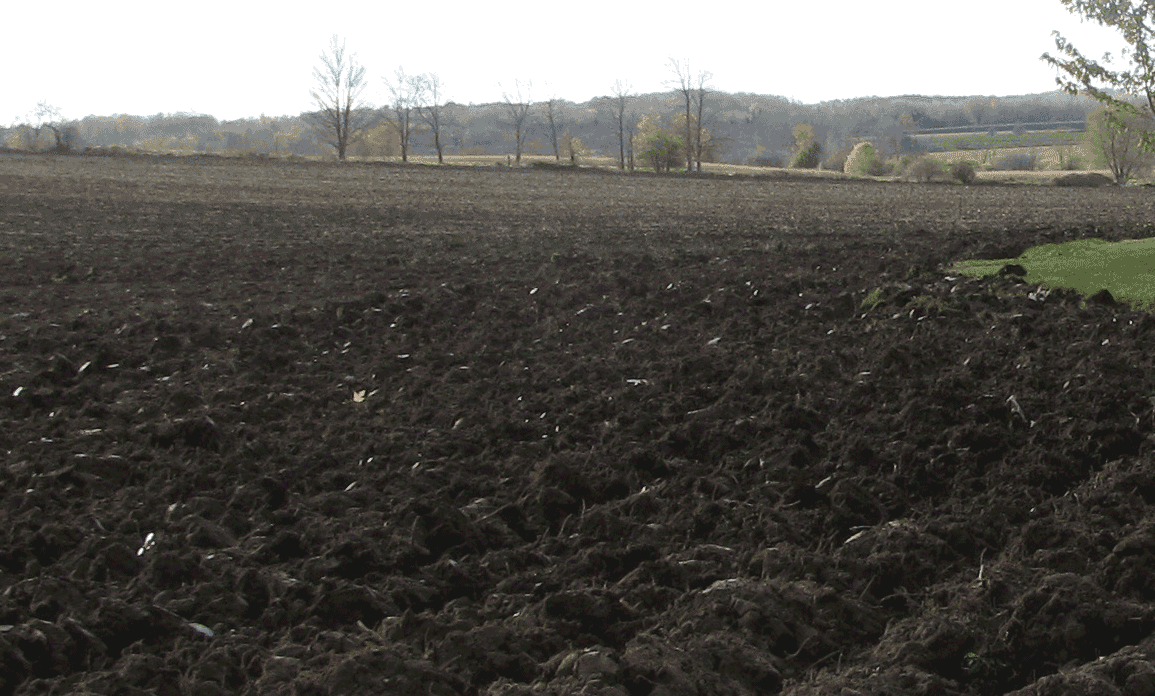Digging deeper into soil quality
SCIENTISTS USING IMAGING TECHNOLOGY
WHEN IT COMES to understanding the ins and outs of soil quality, are growers currently getting only a small part of the picture? The simple answer, according to a University of Guelph researcher, is “yes.”

By using advanced X-ray CT scanning, researchers are creating high-resolution 3D images of soil that offer an unprecedented inside look at soil structures.
Leading this three-year project is Professor Richard Heck, a soil scientist in the University of Guelph’s School of Environmental Sciences.
Heck is working with a multi-disciplinary team that includes integrative biology professor Robert Hanner, plant agriculture professor Bill Deen, environmental sciences professor Gary Parkin, and Dr. Lars Munkhom from Aarhus University in Denmark.
The researchers are using imagery as a way to develop an indicator of soil quality that they hope will give them a more holistic understanding of how different factors – from on-farm management and crop rotations, to water and biodiversity – are all linked in determining soil quality.
“Having good, healthy soil, depends on a set of closely related factors,” explains Heck. “Soil quality can be the ability of a plant to take root, the organic matter and biochemical reactions going on in the soil, what microorganisms are present and whether water can infiltrate and move through the soil.”
Heck and his team have been taking soil core samples from research plots located in Elora, Ridgetown, and Ottawa, as well as an agroforestry plot at the University of Guelph. Each of the plots gives the researchers different tillage regimes, soil textures, crop rotations, and climates to compare.
The researchers are also taking a close look at different management practices on each of the research plots, including tree-based intercropping, removal of crop residues, and the incorporation of forage crops as part of crop rotations, and their impact on soil structure and quality.
Using X-ray CT scanning, Heck and his team are able see subtle, microscopic changes in a soil’s quality and structure unfold over an entire year, by generating 3D images of soil samples taken at different points – from pre-planting, to mid-season, to post harvest. As small as these changes to the soil may seem, they can have a dramatic impact on whether the soil can sustain plant life with each passing season.
Once the researchers collect a soil core sample, they put it through their X-ray CT scanner so that they can find out exactly how the soil structure is put together, such as its texture, solid particles, spaces, and even insects living within each layer. They can also get a sense of a soil’s hydraulic – or water-based properties.
A key component of soil quality, says Heck, is how the soil is able to absorb, retain, and move water. From their x-ray and CT images of the soil samples, the researchers can better understand what impact different types and structures have on water movement.
Another major part of soil quality is tied to biodiversity. Heck is working with Professor Robert Hanner, who is using DNA barcoding to study the insects and micro-organisms found in their soil samples. These creatures can play a major role in soil quality by breaking down organic material, or living within the soil structure.
The researchers want to be able to determine and characterize which structures and management techniques lead to more or less biodiversity in the soil.
“All of these areas are so closely connected. So, you cannot say in isolation whether a soil texture in itself is good or bad,” explains Hanner. “Some soils may support rigorous crop development and superior water-holding capacity, or be able to more effectively break down organic material.”
By developing soil quality indicators from their soil imagery, the researchers will be able to determine which qualities growers need to look for, and what impacts their management practices are having on their soil.
Dr. Lars Munkhom is working to translate what Heck and the rest of his team find from their imaging and analysis into a series of simple field tests growers would be able to perform in the field to get a clearer understanding of their overall soil quality.
“It’s about being able to empower growers on their own land,” he says. “Understanding soil quality is essential if we want to refine best management practices in response to natural pressure, or the agricultural pressures we place on the environment,” says Heck.
This research receives funding from Grain Farmers of Ontario and the Ontario Ministry of Agriculture, Food and Rural Affairs. •







